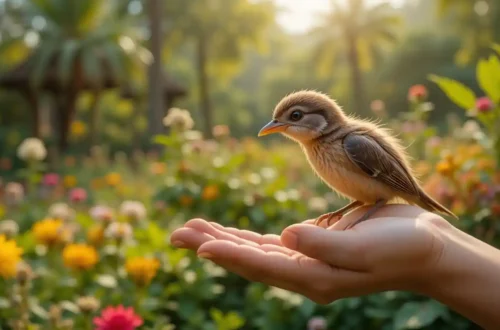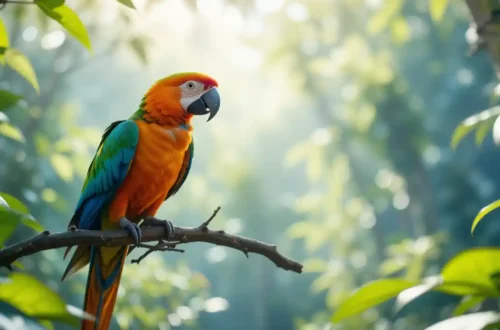Birds in India are incredibly diverse, with over 1,300 species spread across the country. Each bird has unique features, such as beaks and feet, that help them survive and thrive in their environments. Let’s explore how these adaptations make birds so fascinating, focusing on bird beaks and feet worksheet answers relevant to India.
Introduction to Bird Beaks in India
Bird beaks are not just for eating; they are multi-functional tools that help birds gather food, preen feathers, build nests, and even defend themselves. The shape and size of a bird’s beak can tell us a lot about its lifestyle and diet. For example, birds with strong, short beaks are often seed-eaters, while those with long, slender beaks might be probing for insects or sipping nectar from flowers in India’s gardens and forests.
Types of Bird Beaks Found in India
- Seed-Eating Beaks: Birds like sparrows and finches have strong, conical beaks perfect for cracking seeds, which are abundant in India’s diverse landscapes, from the Himalayas to the Deccan Plateau.
- Hooked Beaks: Birds of prey, such as eagles and kites found in India, have sharp, hooked beaks for tearing flesh.
- Probing Beaks: Birds like kingfishers and herons in India use long, pointed beaks to catch fish and other aquatic prey in rivers like the Ganges and lakes like Dal Lake.
- Straining Beaks: Ducks and geese in India have broad, flat beaks with fringed edges to filter small plants and animals from water in wetlands like the Sundarbans.
Bird Feet Adaptations in India
Bird feet are just as varied as their beaks, each designed for specific tasks:
- Perching Feet: Most songbirds in India have three toes forward and one backward, which helps them grasp branches securely in trees found in India’s forests.
- Climbing Feet: Woodpeckers in India have zygodactyl feet, with two toes forward and two backward, allowing them to climb up and down trees in the Western Ghats.
- Swimming Feet: Ducks and geese in India have webbed feet, which act as paddles in water bodies like the Brahmaputra River.
- Running Feet: Ostriches, though not native to India, have powerful legs with reduced toes for running, but birds like the Indian peafowl have strong legs for running in grasslands.
Bird Beaks and Feet Worksheet Answers for India
When matching bird beaks with their feet, it’s essential to consider the bird’s lifestyle and environment in India. For example:
- Birds of Prey: Hawks and eagles in India have strong, hooked beaks and powerful feet with sharp talons.
- Water Birds: Herons and ducks in India have long, probing beaks and webbed or long-toed feet for wading or swimming in India’s coastal regions.
Exploring Bird Beaks and Feet in India’s Habitats
India’s diverse habitats, from forests to wetlands, support a wide range of bird species. Each habitat requires specific adaptations:
- Forest Birds: In India’s forests, birds like woodpeckers use their climbing feet to ascend trees, while their chisel-like beaks help drill into wood for insects in forests like the Sundarbans in eastern India.
- Wetland Birds: In India’s wetlands, herons and egrets use their long legs and probing beaks to catch fish and frogs in places like the Keoladeo National Park in Rajasthan, India.
- Grassland Birds: In India’s grasslands, birds like the Asian Green Bee-eater have long, slender beaks for catching insects in flight over the grasslands of Gujarat, India.
Learning About Bird Beaks and Feet in India
For those interested in learning more about bird beaks and feet in India, there are many resources available:

- Workshops and Guided Tours: Many nature reserves and bird sanctuaries in India offer guided tours and workshops where you can learn about local bird species and their adaptations. For instance, the Indian Bird Conservation Network often organizes events across India.
- Online Resources: Websites and educational platforms provide detailed information and worksheets on bird beaks and feet, helping you understand these fascinating adaptations. You can find different types of beaks and claws of birds pdf resources online to learn more.
Bird Conservation Efforts in India
Conservation efforts in India are crucial for protecting bird habitats and ensuring the survival of diverse bird species. Initiatives like the Wildlife Protection Act of 1972 and the establishment of national parks and sanctuaries across India help safeguard these natural wonders. For example, the Kaziranga National Park in Assam, India, is a protected area that supports a wide range of bird species.
Bird Beaks and Feet Worksheet Answers: A Fun Learning Experience in India
Learning about bird beaks and feet can be a fun and engaging experience, especially when exploring the diverse bird species in India. By using worksheets and educational materials, you can match different beaks with their corresponding feet and learn about the unique adaptations of birds in India.
Additional Resources for Bird Enthusiasts in India
For those interested in learning more about bird beaks and feet, here are some additional resources:
- Bird Watching Tours: Join local bird watching tours in India to see these adaptations up close. Many tour operators offer trips to bird sanctuaries like the Vedanthangal Bird Sanctuary in Tamil Nadu, India.
- Nature Reserves: Visit nature reserves and sanctuaries in India to observe birds in their natural habitats. Places like the Periyar National Park in Kerala, India, are home to a variety of bird species.
- Educational Websites: Use online resources to download worksheets and learn about different types of beaks and claws of birds in India. These resources can help you identify birds based on their beaks and feet.
By exploring these resources, you can deepen your understanding of bird beaks and feet and appreciate the incredible diversity of birds in India. Whether you’re exploring the Himalayas or the backwaters of Kerala, India offers a wealth of opportunities to observe and learn about its avian treasures.
Bird Beaks and Feet: A Key to Understanding India’s Bird Diversity
Understanding bird beaks and feet is a key part of appreciating the diversity of birds in India. Each species has evolved unique adaptations that allow it to thrive in its environment. By studying these adaptations, we can gain a deeper appreciation for the natural world and the amazing creatures that inhabit it.
Bird Beaks and Feet Worksheet Answers: Enhancing Your Bird Watching Experience in India
For bird enthusiasts in India, understanding bird beaks and feet can enhance your bird watching experience. By recognizing the different types of beaks and feet, you can better identify the birds you see and appreciate their unique characteristics. Whether you’re watching birds in the forests of Madhya Pradesh or the wetlands of West Bengal, India, knowing about bird beaks and feet can make your experience even more enjoyable.
Conclusion
Birds in India are a testament to nature’s incredible diversity, with each species having unique beaks and feet that help them thrive in their environments. By exploring these adaptations, we can gain a deeper appreciation for the natural world and the amazing creatures that inhabit it. Whether you’re a seasoned birdwatcher or just starting to learn about birds, understanding their beaks and feet can enrich your experience of India’s avian wonders.






